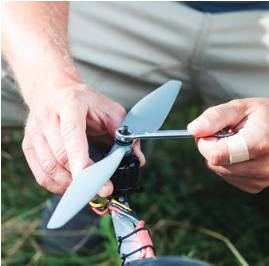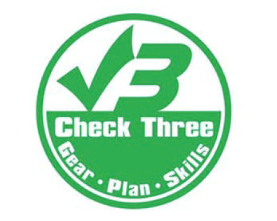Check Yourself Before You Wreck Yourself
Source: FAA Safety Briefing, Jan/Feb 2020

Some things change and some things stay the same. When it comes to basic things like blenders and bicycles, you can be reasonably certain that you will be able to use even the newest and most technologically advanced versions of these products because the concepts are relatively simple. However, when it comes to things like smart phones and drones, you’re going to be left behind if you don’t keep up with the technology and stay versatile. To be more specific, when it comes to drones, you might wind up losing your drone or worse, hurting yourself or someone else.
It seems like everything today is “smart” and customizable. This fact offers lots of options but also demands lots of responsibility for the choices we make. There is an amazing variety of consumer drones on the shelves today. Some are pretty basic and easy to fly, while others are highly capable machines with advanced functions like first person view and automated flight. It would be nearly impossible to provide a basic “how to” guide for understanding and operating any drone. But, there is a simple checklist you can use to help guide your choices and your flight plans. It’s called “Check3 GPS.”
Check3 GPS (Gear, Plan, Skills) is a quick and easy checklist that you can use before and during flight to help you think through all of the possible hazards you might face and how you’ll handle them. The military has adopted this idea, which is also supported by the Unmanned Aircraft Safety Team (UAST). In fact, it has been widely used for all sorts of activities from snowboarding to free diving — and it works great for flying drones too.
Here’s how it can work for you:
Gear: Don’t Blame the Equipment.
Learn all about what your drone can do and how it works. The best way to do this is to read the owner’s manual and talk to other people who fly the same equipment. But gear isn’t just the machine. You’ll also want to routinely check that you have the most up-to-date software and that all of the components are in good working order. Additionally, you’ll want to think about other gear you might need for a given flight like glare shields, camera lenses, or backup power sources.
Plan: Plan your work and work your plan.
Good planning usually leads to good outcomes. It always pays to think ahead about where, when, and how you’re going to execute a flight. This includes things like: time of day (when is sunrise/sunset?), weather (is there rain or are there high winds in the forecast?), location (will there be people around or are you near an airport?), airspace (do you need an authorization?), temporary flight restrictions (check to make sure there aren’t any), route (what pattern and altitude will you use?), contingency plan (what will you do if things don’t go according to plan?). You can (and should) add appropriate considerations to this list.
Skills: Garbage in, garbage out.
It’s tempting to underappreciate the skills involved in flying a drone. Many drones are marketed as “easy to fly” or “flies itself,” but no matter how advanced your equipment, it still requires a proficient person at the controls. This means that you should learn about and practice with your drone’s different functions in a safe and open area before flying in more complicated places. It also means that you should take care of yourself — be sure to eat, sleep, and avoid medications that might affect your ability to make good decisions. You should always double check your plan. Many accidents and incidents result from a mistaken input into a flight program. The difference between flying at 308 feet versus 380 feet may not seem like a big deal ... unless there’s a 310 foot tree in your flight path.
Check3 GPS works just as well for beginners as it does for the pros. So always Check3 before you fly.

Danielle Corbett is an aviation safety inspector with the FAA’s Office of Unmanned Aircraft Systems.
|